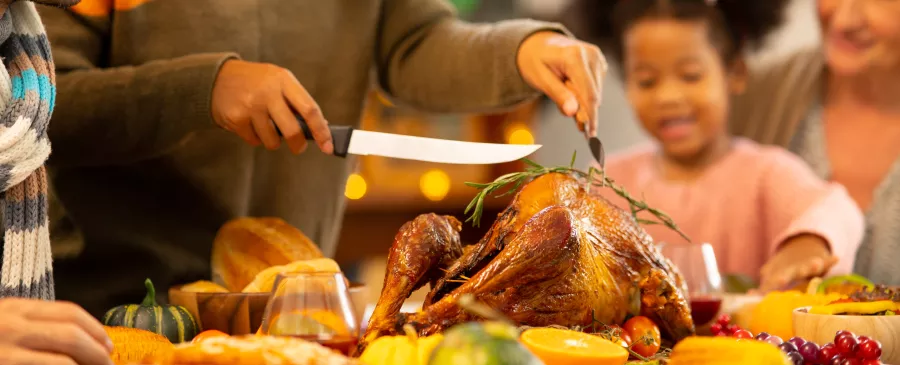
By Holly Yan, CNN November 16, 2020 at 11:50 pm
Filed Under: CNN, Coronavirus, Thanksgiving
(CNN) — If you think a negative test result means you don’t have coronavirus, you could be wrong.
It can take days before a new infection shows up on a COVID-19 test.
“We know that the incubation period for COVID-19 is up to 14 days. And before that, you can be testing negative and have no symptoms,” emergency medicine physician Dr. Leana Wen said.
“But you could actually be harboring the virus and be able to transmit it to others.”
So if you want to get tested before seeing friends or family, here’s what you need to know:
If I got infected yesterday, would a test today pick that up?
Probably not. A study in the medical journal Annals of Internal Medicine examined false-negative test results of people who actually had COVID-19 .
The study estimated that during four days of infection before symptoms typically started, the probability of getting an incorrect/negative test result on Day 1 was 100%.
On the day people started showing symptoms, the average false-negative rate had dropped to 38%, according to the study. Three days after symptoms started, the false-negative rate dropped to 20%.
“The virus just takes time to replicate in the body to detectable levels,” said Justin Lessler, a senior author of the study and associate professor of epidemiology at the Johns Hopkins Bloomberg School of Public Health.
Related: CDC Releases Thanksgiving Recommendations
“You can get infected by just a few viral particles, but these will not be detectable until they have time to replicate to adequate levels to be detected,” he told CNN by email.
So how many days should a person wait after possible exposure to get tested?
“There is no hard and fast rule, but the evidence suggests getting a test before the third day after exposure is not of much use,” Lessler said.
Could I be contagious while testing negative?
Absolutely. “People sort of feel like if you test (negative), you’re out of the woods. And you’re kind of not,” said Dr. Rochelle Walensky, chief of the infectious diseases division at Massachusetts General Hospital.
For people who get sick with COVID-19, symptoms can take up to two weeks to appear, but the average time is about five days, Walensky said.
“It’s generally thought that you’re most infectious the two days before that day and the two days after that,” she said.
One reason why this virus spreads so easily is because people can be infectious without any symptoms. The US Centers for Disease Control and Prevention estimates 40% of infections are asymptomatic, and 50% of transmissions happen before symptoms begin.
“It’s been among the biggest Achilles’ heels of this. And it’s been among the biggest challenges and the unexpected things because (with) its cousins, this is not true,” Walensky said.
“The reason we were able to control the SARS outbreak so quickly — although there were obviously a lot of deaths there — but it didn’t turn into a pandemic is because people weren’t shedding (the virus) until they got symptoms.”
Do different COVID-19 tests matter?
There are two main types of diagnostic tests that try to detect whether you have an active coronavirus infection:
Molecular tests, such as PCR tests, look for the virus’ genetic material. Most of these tests are performed with nasal swabs or throat swabs, though some can be done using saliva, the US Food and Drug Administration says.
“This test is typically highly accurate and usually does not need to be repeated,” the FDA says.
But the downside to molecular testing is that results can take a while — anywhere from the same day to one week after testing.
“For people who show symptoms, so far the studies show the accuracy of the molecular test to find a positive case increases with each day after the exposure,” said Pia MacDonald, infectious disease epidemiologist at the nonprofit research institute RTI International.
But for infected people who don’t get symptoms, the accuracy rates are less clear, she said. “Molecular test performance studies on asymptomatic people are very limited.”
Antigen tests are often known as rapid tests (though some molecular tests are rapid, too). Antigen tests are not antibody tests, which tell you whether you’ve previously had the virus and have already developed antibodies against the infection.
Antigen tests don’t look for the virus’ genetic material, like molecular tests do. Instead, they look for specific proteins on the surface of the virus.
The good news is you can get antigen test results in less than an hour. The bad news is you’re more likely to get a false negative with a rapid antigen test.
“Positive results are usually highly accurate but negative results may need to be confirmed with a molecular test,” the FDA says.
“Antigen tests are more likely to miss an active coronavirus infection compared to molecular tests.”
This could help explain some of the recent spread of COVID-19 linked to the White House.
While staff members close to President Donald Trump and Vice President Mike Pence are frequently tested, White House staffers often use rapid antigen tests, which generally have a higher rate of false negatives than molecular tests do.
Regardless of which type of diagnostic test you use, you’re generally more likely to get a false negative than a false positive.
“If a molecular test is positive, it’s an accurate reflection of a person being infected,” MacDonald said.
“If it’s negative, it’s less reliable that the person is indeed negative. The same is true of the antigen tests.”
Can I test myself at home?
Yes. There are some at-home testing kits available, such at the Everlywell COVID-19 molecular test. Users take their own nasal swab samples and mail them to a lab, which will send results digitally within 24 to 48 hours of receiving the samples.
But taking any kind of COVID-19 test too early might miss an infection, said Dr. Frank Ong, chief medical and scientific officer at Everlywell.
“As testing capacity has continued to increase, more and more asymptomatic or mildly symptomatic individuals have undergone testing, most of whom likely have lower viral loads in their clinical samples,” he said.
So what should I do if I want to see friends or relatives?
If you insist on seeing anyone who doesn’t live with you, self-quarantining for 14 days beforehand is best, Walensky said.
“If you do that properly, you don’t need a test,” she said. “That’s probably the cleanest way to do it.”
To be clear: Quarantining means staying home. It does not mean you can run errands.
“‘Grocery store’ and ‘quarantine’ don’t belong in the same sentence,” Walensky said.
Lessler agreed that quarantining is best and any testing must be done intelligently.
“If you are visiting an elderly family member and have a reasonable risk of having been exposed, there is no substitute for 14 days of quarantine,” Lessler said.
“At the very least I would wait 10 days (of quarantining) and have a negative test,” he said.
“If you are visiting a younger, healthy family member and have little chance of being exposed before or during travel, then 5 or 7 days (of quarantine) plus a negative test is probably plenty of risk reduction, though no guarantee of safety.”
What should I do after testing negative?
It’s important to strictly quarantine not just before your COVID-19 test, but after your test as well.
“You should definitely remain in quarantine while awaiting test results and make sure everyone you are getting together with is on the same page about the plan for controlling infection risk,” Lessler said.
There have already been cases of coronavirus spread within families just days after a person tested negative, said Dr. Michael St. Louis, a member of the CDC’s Community Guidance Team.
He said everyone must remember to treat family from different households the same way you would treat unrelated friends or work colleagues during this pandemic.
What’s the safest way to celebrate Thanksgiving?
The best way to help make sure everyone stays healthy is to celebrate the holidays remotely.
“I have three kids. … And my parents are not going to be joining us this year,” Walensky said.
“It’s just awful. But what I really hold out for is that my parents are pretty healthy and I would never forgive myself if I put them in harm’s way. And I’m just looking forward to a 2021 when we can be together.”
The CDC suggests celebrating with loved ones virtually online. You can also make traditional Thanksgiving dishes and deliver them “in a way that doesn’t involve contact” to relatives, neighbors or those who might be feeling lonely.
Walensky said the small sacrifices made this Thanksgiving will help ensure everyone will be healthy enough to sit at the table next year.
“At least they’ll be there next year, whereas irresponsible behavior now might mean they won’t be here later,” she said.
“Let’s do this so that we can have a much better shot of being around the table together, healthy, in 2021.”
The-CNN-Wire™ & © 2020 Cable News Network, Inc., a WarnerMedia Company. All rights reserved.
